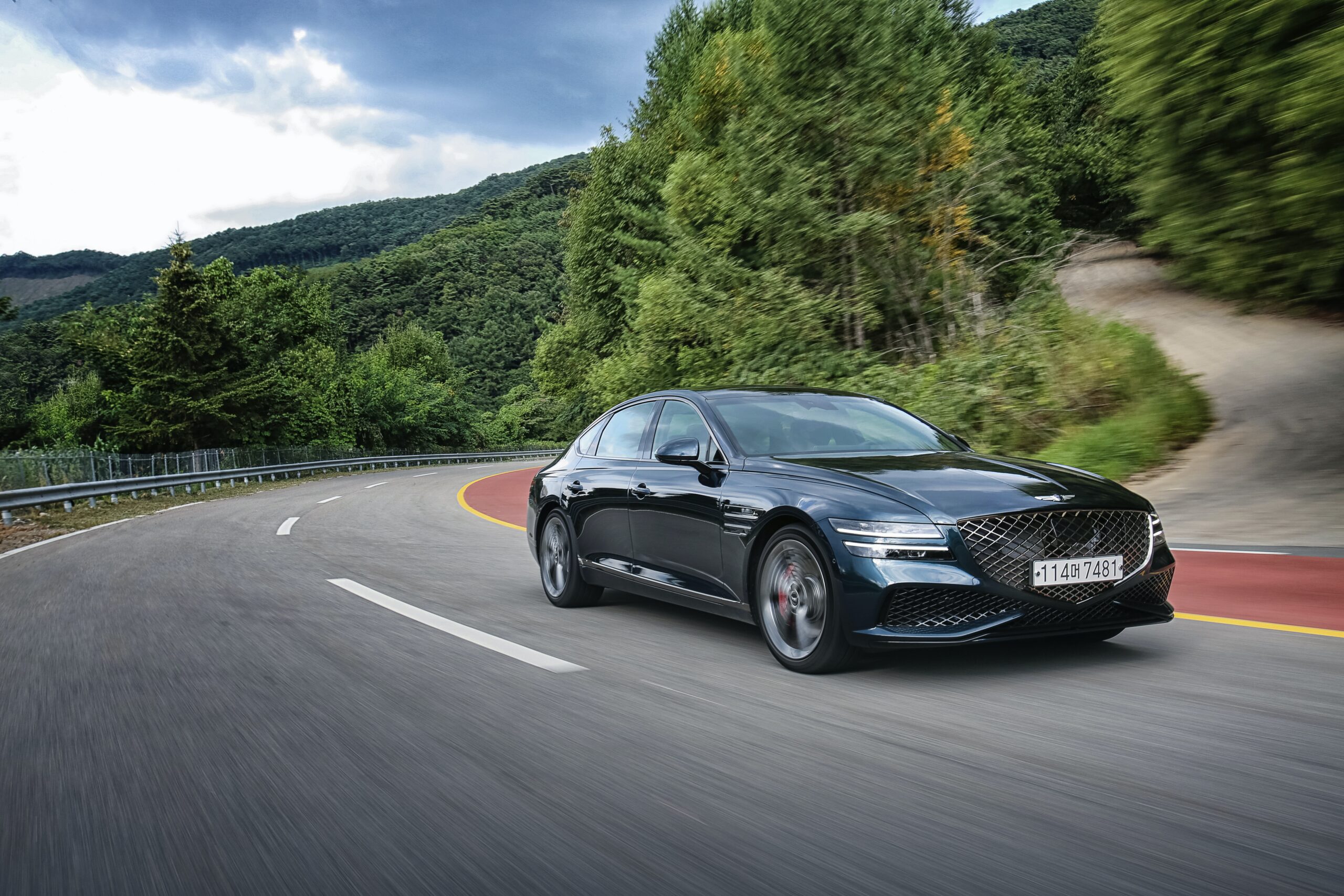Types Of EV Chargers: Level 1, Level 2, And DC Fast Charging
October 22, 2023 | by Jacob Kang

So you’re curious about electric vehicle (EV) chargers, huh? Well, you’re in the right place. In this article, we’re going to dive into the world of EV charging and explore the different types of chargers available. Whether you’re a seasoned EV owner or just starting to consider making the switch, understanding the different levels of charging – Level 1, Level 2, and DC fast charging – will help you make informed decisions about how and where to charge your electric ride. So buckle up and let’s take a closer look at these charging options.
Level 1 Charging
Overview
Level 1 charging refers to the basic charging method for electric vehicles (EVs). It involves plugging the EV into a standard 120-volt household outlet. Level 1 chargers typically come with EVs and are the slowest charging option available for EV owners.
Technical Specifications
A Level 1 charger uses a standard 120-volt AC outlet, which provides a charging rate of around 4-5 miles of range per hour. The charger has a power output of approximately 1.4-1.9 kilowatts (kW). Level 1 chargers usually come with a portable cord set that has a standard three-prong plug on one end and a connector for the car on the other end.
Charging Time
Due to the lower power output, Level 1 charging is a slow process compared to other charging options. A full charge can take anywhere from 8 to 20 hours, depending on the battery size of the EV. Level 1 chargers are more suitable for overnight charging or for situations where the vehicle will be parked for an extended period.
Advantages
One of the main advantages of Level 1 charging is its accessibility. Since it utilizes standard household outlets, you can charge your EV anywhere there is an available electrical outlet. Additionally, Level 1 charging does not require any additional charging infrastructure or installations, making it a convenient and cost-effective option for some EV owners.
Disadvantages
The biggest drawback of Level 1 charging is its slow charging speed. If you rely solely on Level 1 charging, it may not provide enough miles of range per hour to meet your daily driving needs. This can be particularly problematic for EV owners who have longer commutes or frequently take road trips. Additionally, Level 1 chargers may not be ideal for those who require quick turnaround times between trips or rely heavily on their vehicles throughout the day.
Level 2 Charging
Overview
Level 2 charging is a faster and more efficient option compared to Level 1 charging. It operates at higher voltage and typically requires the installation of a charging station. Level 2 chargers are commonly found in residential homes, workplaces, and public charging stations.
Technical Specifications
Level 2 chargers use 240-volt AC power, which allows for faster charging rates compared to Level 1 chargers. The power output of a Level 2 charger can range from 3.3 kW to 19.2 kW, depending on the model. Level 2 chargers come with a charging cable that connects to the EV through a standardized connector.
Charging Time
Level 2 chargers provide a significantly faster charging time compared to Level 1 chargers. The charging rate can range from 10 to 60 miles of range per hour, depending on the power output of the charging station and the vehicle’s charging capabilities. Charging a fully depleted EV battery using a Level 2 charger typically takes around 4 to 8 hours.
Advantages
Level 2 charging offers several advantages over Level 1 charging. The faster charging speed allows for quicker top-ups and provides more flexibility for EV owners with higher daily mileage requirements. Level 2 chargers are also relatively easy to install and can be used in various settings, such as homes, workplaces, and public charging stations. Additionally, many electric utilities offer time-of-use rates, allowing EV owners to take advantage of lower electricity rates during off-peak hours.
Disadvantages
While Level 2 chargers are faster than Level 1 chargers, they still require an extended charging time compared to other charging options like DC fast charging. This means that Level 2 chargers may not be suitable for EV owners who need to quickly charge their vehicles during their busy schedules. Additionally, the installation of a Level 2 charging station may require some electrical work and upfront costs, which can be a barrier for some homeowners or renters.

DC Fast Charging
Overview
DC fast charging, also known as Level 3 charging or rapid charging, is the fastest charging option available for EVs. It utilizes direct current (DC) to charge the vehicle’s battery at a significantly higher power output compared to Level 1 and Level 2 chargers. DC fast chargers are typically found in public charging stations along major highways or in urban areas.
Technical Specifications
DC fast charging stations use much higher voltage and current levels compared to Level 1 and Level 2 chargers. They can provide power outputs ranging from 50 kW to 350 kW, depending on the charger’s capabilities and the vehicle’s charging capacity. DC fast charging stations are equipped with specialized connectors that are not compatible with Level 1 or Level 2 chargers.
Charging Time
The main advantage of DC fast charging is its incredibly fast charging speed. Depending on the power output of the charging station and the vehicle’s battery capacity, a DC fast charging session can provide a significant amount of range in a short period. With high-power chargers, it is possible to add around 80% of battery capacity in as little as 20-30 minutes.
Advantages
The primary advantage of DC fast charging is its speed. It offers a convenient option for long-distance travel or when you need to quickly charge your EV during a busy day. Additionally, DC fast charging stations are usually located in easily accessible areas, making it convenient for EV owners to find a charging point on the go. The fast charging times provided by DC fast chargers help alleviate range anxiety and make EVs more practical for extended trips.
Disadvantages
One of the biggest disadvantages of DC fast charging is its high upfront cost and infrastructure requirements. Installing a DC fast charging station involves significant electrical work and expenses, making it less viable for individual homeowners. Additionally, not all EVs are equipped with the capability to handle high-power DC fast charging, limiting accessibility for certain vehicle models. The fast charging rates of DC fast chargers may also cause more stress on the EV battery, potentially reducing its overall lifespan.
Comparing the Different Chargers
Charging Speed
When comparing the charging speed of different charger types, it is clear that DC fast charging provides the fastest charging times. It can add a significant amount of range in a short period, making it ideal for long-distance travel and quick top-ups. Level 2 charging comes next in terms of speed, providing a substantial charge within a few hours. Level 1 charging is the slowest option, taking several hours to fully charge an EV.
Installation Requirements
Level 1 charging does not require any additional installations since it utilizes standard household outlets. Level 2 charging requires the installation of a charging station, which may involve some electrical work and upfront costs. DC fast charging requires specialized charging stations with high-power capabilities and significant infrastructure requirements. Installing a DC fast charging station is more complex and expensive compared to Level 1 and Level 2 chargers.
Cost
Level 1 charging is the most cost-effective option since it does not require any additional charging infrastructure. Level 2 charging involves the purchase and installation of a charging station, which can range in price depending on the brand and features. Installation costs may vary depending on the existing electrical setup. DC fast charging is the most expensive option due to the high upfront costs associated with installing the specialized charging stations.
Availability
Level 1 charging is widely available since it can be done anywhere there is a standard household outlet. Level 2 charging stations are becoming more common in residential areas, workplaces, and public charging networks. DC fast charging stations are typically found along major highways, in urban areas, and at select public charging stations. The availability of each charger type can vary depending on the region and the support for EV infrastructure.
Compatibility
Level 1 charging is compatible with all electric vehicles since it uses a standard plug. Level 2 charging requires the use of a compatible charging station and connector, which can vary depending on the vehicle model. DC fast charging requires specialized connectors, and not all EVs are equipped with the capability to handle high-power charging. Compatibility issues may arise when using a DC fast charger with certain EV models.

Choosing the Right Charger for Your Needs
Consider Your Daily Driving Habits
When choosing the right charger for your needs, it is essential to consider your daily driving habits. If you have a shorter commute or lower mileage requirements, Level 1 charging may be sufficient for your needs. If you have a longer daily commute or frequently drive longer distances, Level 2 charging would be more suitable. DC fast charging is ideal for those who require quick charging on the go or for long-distance travel.
Evaluate Your Home or Workplace Charging Options
Assessing the charging options available at your home or workplace is crucial in determining the right charger for your needs. If you have access to a dedicated parking space with a nearby electrical outlet, Level 1 charging may be a feasible option. If you have the ability to install a charging station, Level 2 charging would provide faster and more convenient charging. DC fast charging is typically not feasible for home charging but can be considered if workplace or public fast charging stations are nearby.
Think About Future-proofing
Considering the future growth of the EV market and the potential increase in range and charging capabilities of new EV models, it is essential to think about future-proofing your charging setup. Opting for a Level 2 charger that provides higher power output and supports various connector options can ensure compatibility with future EV models. Additionally, choosing a charging station with smart charging features and connectivity options can provide added flexibility and adaptability as EV technology advances.
Consider Your Budget
Budget is an important factor to consider when choosing the right charger for your needs. Level 1 charging is the most cost-effective option since it does not require any additional infrastructure or installation costs. Level 2 charging involves the purchase and installation of a charging station, which can range in price depending on the features and capabilities. DC fast charging is the most expensive option due to the high upfront costs associated with specialized charging stations.
Understanding the Charging Connector Types
J1772 Connector
The J1772 connector is the standard connector used for Level 1 and Level 2 charging. It features a plug-and-socket design and can handle power outputs up to 19.2 kW. The J1772 connector is compatible with most electric vehicles in North America and provides a reliable and safe charging solution.
CHAdeMO Connector
The CHAdeMO connector is a specialized connector used for DC fast charging. It was developed by Japanese automakers and is commonly found in Asian and European markets. The CHAdeMO connector can handle power outputs up to 62.5 kW and is compatible with certain EV models that support high-power DC fast charging.
CCS Connector
The Combined Charging System (CCS) connector is an evolving standard that combines AC and DC charging capabilities. It features a two-plug system, with one plug for AC charging (Level 1 and Level 2) and another plug for DC fast charging. The CCS connector can handle power outputs up to 350 kW and is compatible with many EV models in North America and Europe.
Tesla Supercharger Connector
The Tesla Supercharger connector is a proprietary connector used exclusively for Tesla vehicles. It is designed for high-power DC fast charging and can handle power outputs up to 250 kW. Tesla Superchargers are widely available in Tesla’s Supercharger network and provide fast charging for Tesla owners.

Charging Networks and Service Providers
Public Charging Networks
Public charging networks are a crucial infrastructure component for EV owners who rely on charging stations away from home. These networks consist of charging stations located in various public areas, including shopping centers, parking lots, and highway rest areas. Some notable public charging networks include ChargePoint, EVgo, and Electrify America. These networks often require a membership or access card for usage and provide convenient options for EV owners on the go.
Subscription Services
Subscription services have emerged to provide EV owners with access to a wide range of charging networks through a single membership or subscription. Examples of subscription services include EVgo’s EVgo Access and ChargePoint’s ChargePoint Pass. These services offer simplified billing and access to thousands of charging stations across different networks, making it more convenient for EV owners to charge wherever they go.
Payment Options
Most public charging stations offer various payment options for EV owners who do not have a membership or subscription. Payment can often be made through mobile apps, credit cards, or prepaid cards. Some charging networks may require users to create an account and link a payment method for billing purposes. The availability of payment options may vary depending on the charging station and network.
Maintenance and Customer Support
Charging networks and service providers are responsible for maintaining and servicing their charging stations. Regular maintenance ensures that the charging infrastructure remains in good working condition and minimizes downtime. Customer support is also an important aspect of charging networks, as users may require assistance with payment issues, troubleshooting, or general inquiries. Good customer support can enhance the overall experience of EV owners who rely on public charging networks.
Advancements in EV Charging Technology
Wireless Charging
Wireless charging, also known as inductive charging, is an emerging technology in the EV charging industry. It eliminates the need for physical cables and connectors by using an electromagnetic field to transfer energy from the charging station to the vehicle’s battery. Wireless charging offers convenience and ease of use, as EV owners simply need to park their vehicle over a charging pad or mat for charging to commence. While still in its early stages, wireless charging has the potential to revolutionize the way EVs are charged in the future.
Vehicle-to-Grid Integration
Vehicle-to-Grid (V2G) integration refers to the capability of EVs to not only consume energy from the grid but also to return excess energy back to the grid. This bi-directional flow of energy enables EVs to function as mobile energy storage devices, providing grid stability and balancing capabilities. V2G integration can help optimize energy usage and support the integration of renewable energy sources by allowing EVs to act as temporary energy storage systems.
Smart Charging
Smart charging involves the use of advanced software and communication technologies to optimize the charging process. It allows for better control and management of charging sessions, taking into account factors such as electricity grid demand, energy prices, and charging station availability. Smart charging systems can communicate with EVs and charging stations to schedule charging during off-peak hours or when renewable energy generation is at its peak. This helps reduce the overall strain on the grid and promotes more efficient and sustainable charging.

Government Initiatives and Incentives
Federal Tax Credits
Many governments, including the United States, provide federal tax credits as an incentive for purchasing an electric vehicle. These tax credits reduce the amount of federal income tax owed by the EV owner. The specific value of the tax credit varies depending on the battery size of the vehicle and can range from several hundred dollars to several thousand dollars.
State and Local Incentives
In addition to federal tax credits, many states and local governments offer their own incentives to encourage the adoption of electric vehicles. These incentives can include rebates, grants, reduced registration fees, and exemptions from certain taxes. The availability and value of these incentives vary from state to state and can significantly reduce the upfront cost of purchasing an EV.
Utility Programs
Electric utilities also play a role in incentivizing EV adoption through various programs. Some utilities offer special electricity rates for EV owners, such as time-of-use rates that provide lower electricity prices during off-peak hours. Utilities may also provide rebates or incentives for installing EV charging stations at home or workplace settings. Collaborations between utilities and charging network operators can result in expanded charging infrastructure and improved charging experiences for EV owners.
The Future of EV Charging
Improved Charging Speeds
As technology advances, charging speeds are expected to improve significantly. Manufacturers are already developing EV models capable of handling higher-power charging rates, pushing the boundaries of what is currently possible. Ultra-fast charging stations with power outputs exceeding 350 kW are being developed, allowing for even faster charging times. The future of EV charging holds the promise of near-instantaneous charging, resembling the refueling experience of conventional vehicles.
Expanded Charging Infrastructure
As the demand for EV charging increases, the charging infrastructure will continue to expand. More public charging stations will be installed, making it easier for EV owners to find a charging point wherever they go. Businesses, shopping centers, and parking facilities will increasingly incorporate charging stations into their infrastructure, catering to the growing EV market. Rural areas will see expanded charging networks, ensuring that EV owners in all locations have access to convenient charging options.
Integration with Renewable Energy
The future of EV charging will see increased integration with renewable energy sources. Charging stations will be designed to optimize the use of solar, wind, and other renewable energy generation, reducing the environmental impact of charging. Energy storage solutions, such as stationary batteries, can be integrated with charging infrastructure to store excess renewable energy for future use. This integration will further support the transition towards a sustainable and carbon-neutral transportation system.
In conclusion, the world of EV charging offers various options and considerations for EV owners. Level 1 charging provides accessibility and convenience, but with slower charging times. Level 2 charging offers faster charging for daily needs, requiring the installation of a charging station. DC fast charging provides rapid charging for long trips and busy schedules, but at a higher cost. Factors such as charging speed, installation requirements, cost, availability, and compatibility should be taken into account when choosing the right charger for your needs. Advancements in EV charging technology, government initiatives and incentives, and the future of EV charging all contribute to a more seamless and sustainable charging experience for EV owners.

RELATED POSTS
View all


